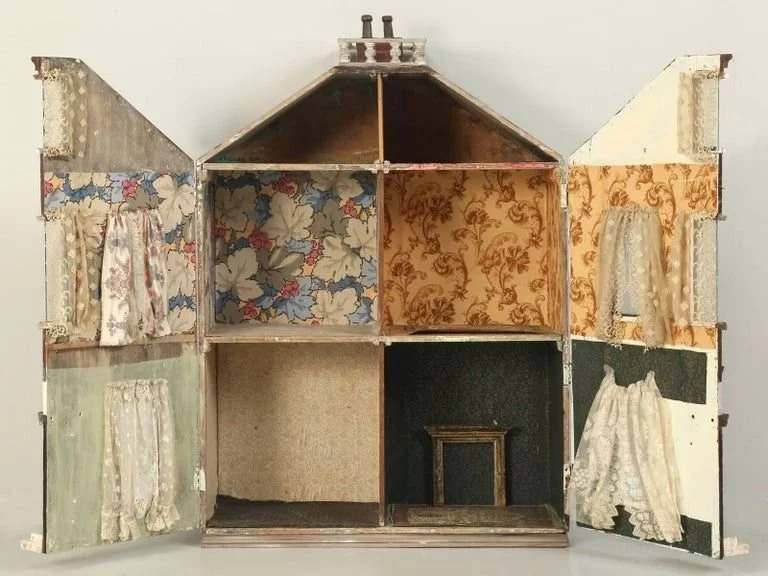State of Woman began with my fascination for dollhouses - objects that are inherently voyeuristic, miniature worlds built for observation and control. I noticed that whenever I shared something about them, many women felt deeply drawn to the images. There’s something about them that pulls you back into childhood, while at the same time exposing what lies beneath: the gendered socialization of girls. That was the initial spark.
I then decided to structure the project around the four fundamental rooms of a home. The work became a spatial exploration, something between stage and set design - but created entirely with minimal means. I had no access to an actual house, so I built everything on the beach, using elements like bamboo sticks and laundry lines to construct each space. Every room contains specific objeects that function visually, but also hold symbolic, metaphorical, or conceptual meaning.
There are echoes of other works here - like Bill Viola’s Catherine’s Room, where a woman moves gently through her domestic life, serene and spiritual; the male gaze at work. State of Woman seeks to be a counter-image. Here, domesticity is not a sanctuary, but a site of suffocation, performance, and revolt.
Over the course of a year, State of Woman turned into a 17-minute video performance investigating the condition of being a woman inside a patriarchal structure - symbolized, both literally and metaphorically, by the innate motif of the dollhouse. Each of its four rooms - the bathroom, bedroom, kitchen, and living room - becomes a site of quiet revolt, where one woman transforms from docile to disobedient, from serving to subversive.
This work exists in dialogue with our shared, global reality. Across the world, women and girls perform over 12.5 billion hours of unpaid care work every day (source), making up more than three-quarters of all unpaid labor - a form of invisible work that sustains economies while limiting women’s access to education, rest, and agency. At the same time, one in three women experience physical or sexual violence in their lifetime, most often by intimate partners (source). For women of color, queer and trans people, and those in marginalized communities, these injustices multiply (source, source). The domestic sphere - so often idealized as safe or sacred - remains a dangerous, exploitative space for many (source).
While I initially wanted the work to carry a sense of hope, I realized: there is no hope in a patriarchal house, because no one wins here. Instead, what remains is endurance - women continuing to live, to create, to rage quietly within the walls that confine them.
The piece does not offer answers, because I believe art cannot - and should not - resolve what is still burning. What it can do is open: windows, questions, dialogue. State of Woman is my attempt to open such a space, where emotion becomes language, and silence becomes protest.










